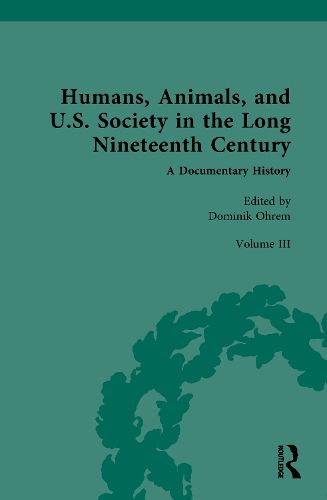Readings Newsletter
Become a Readings Member to make your shopping experience even easier.
Sign in or sign up for free!
You’re not far away from qualifying for FREE standard shipping within Australia
You’ve qualified for FREE standard shipping within Australia
The cart is loading…






Volume III hones in on the relations between humans and domesticated animals in U.S. society, illuminating how these relations were integral to key developments of the long nineteenth century. A first section explores the role of domesticated animals in what for most of the nineteenth century remained a predominantly agrarian world (albeit one undergoing significant change), focussing on the labour and products that could be extracted from animal bodies, the "education" of working animals, contemporary attempts at "improving" animal breeds to increase agricultural productivity and market value, the rise of veterinary medicine, and other topics. The second section demonstrates that, the "transportation revolution" of the antebellum decades notwithstanding, animals remained essential for moving around goods and people in both rural areas and the growing U.S. cityscapes, where horses powered everything from carriages to streetcars, as well as in other nineteenth-century contexts that relied on equine, bovine, and, sometimes, canine traction. A third and final section is centred on domesticated animals in entertainment and competitive settings, ranging from the prestigious if embattled sport of Thoroughbred horse racing to pigeon fancying and the brutal spectacles of dog- and cockfighting, which quickly became the target of a spirited post-Civil War anticruelty movement.
$9.00 standard shipping within Australia
FREE standard shipping within Australia for orders over $100.00
Express & International shipping calculated at checkout
Volume III hones in on the relations between humans and domesticated animals in U.S. society, illuminating how these relations were integral to key developments of the long nineteenth century. A first section explores the role of domesticated animals in what for most of the nineteenth century remained a predominantly agrarian world (albeit one undergoing significant change), focussing on the labour and products that could be extracted from animal bodies, the "education" of working animals, contemporary attempts at "improving" animal breeds to increase agricultural productivity and market value, the rise of veterinary medicine, and other topics. The second section demonstrates that, the "transportation revolution" of the antebellum decades notwithstanding, animals remained essential for moving around goods and people in both rural areas and the growing U.S. cityscapes, where horses powered everything from carriages to streetcars, as well as in other nineteenth-century contexts that relied on equine, bovine, and, sometimes, canine traction. A third and final section is centred on domesticated animals in entertainment and competitive settings, ranging from the prestigious if embattled sport of Thoroughbred horse racing to pigeon fancying and the brutal spectacles of dog- and cockfighting, which quickly became the target of a spirited post-Civil War anticruelty movement.